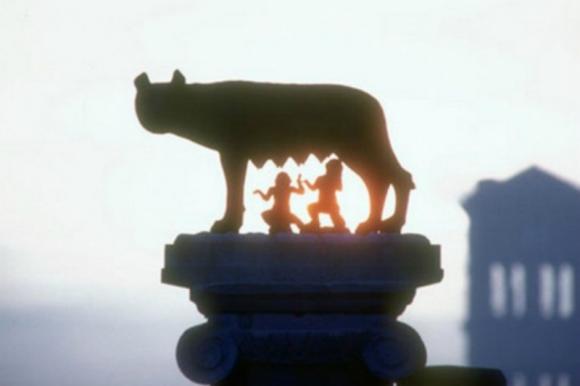The 21 April marks the feast of Christmas in Rome, a thousand year anniversary, celebrating the foundation of the Eternal City.
The birth of Rome is shrouded in legend: the myth of Romulus and Remus and the heroic exodus of Aeneas, narrated by Virgil to commend the Emperor Augustus, make the foundation of Rome a mysterious and mythical event. In fact, the legend tells of the arrival of Aeneas on the Lazio coasts, which after facing an odyssey in the Mediterranean, was looking for a new homeland to donate to the Trojan exiles, who would have founded Alba Longa, Rome's historic enemy in the early years of its expansion. The son of Aeneas, Iulo Ascanio, would have been the ancestor of Romulus, who, according to the myth, would have laid the groundwork for the construction of the future Caput Mundi. Romulus is also named after one of the seven hills of Rome: the Quirinale (from Quirino, God who was identified with Romulus). Romulus, then, allied himself with the Sabines, an event that allowed the definitive creation of the city.
As almost always, however, History does not agree with the Legend. In fact, according to recent excavations and studies, it is believed that Rome is the result of a progressive union of villages (which were located on the seven hills) and not of a single act of foundation, as stated by ancient historians and some modern . This new type of vision is derived from the comparison with other foundations of cities, contemporaneous with the birth of Rome, central Italy, which were born by aggregation of population centers. On the other hand, the cities of Magna Graecia and Southern Italy were founded through a deed of foundation.
This theory fits perfectly with the reconstructions of some Latin historians, who claimed that the Italic peoples present in the Roman area (such as Sabini and Latini) had merged to give life to Rome.
Rome arose in a fundamental strategic point: it was an important commercial crossroads, as it was neither too far from the sea and overlooked the Tiber, in the place where the Tiber Island was present, used to make the transport of river goods less difficult. land. In addition, the area presented itself as easily defensible from enemy attacks, given the high presence of heights, including the Capitol Hill, used for military reasons given its position. This allowed the city to increase its economic and military power rapidly, also favored by the encounter between the different cultures that occupied the area, such as the Etruscan, Greek - Arcadian and Latin, which union became essential for the subsequent development of the city, so that he allowed Rome to have 3 Etruscan sovereigns.
In the end, therefore, the birth of Rome was not the result of someone's will, but was the daughter of a tangle of cultures and peoples aimed at creating a new power, destined to influence the destiny of the world in the centuries to come.












